After failing in their bid to secure the services of Martin Jol from Ajax, last week Fulham announced the appointment of Mark Hughes as their new manager. Jol had appeared strangely keen to leave a team that has won the European Cup four times for London. Although, as always, money probably played a part in his deliberations, as the famous Amsterdam club has become a selling side, while Fulham, though not the wealthiest, do have transfer funds available.
Hughes is replacing Roy Hodgson and the former Manchester City manager acknowledged that this will be a tough act to follow, “I am joining on the back of two of the most successful seasons in the club's history and that in itself brings with it the challenges of expectation and ambition.”
Having been appointed halfway through the '07-'08 season with Fulham in the Premier League relegation zone, Hodgson rallied his team sufficiently for them to evade the drop, before leading them to an impressive seventh place the following year, which secured European qualification for only the second time ever.
Last season was arguably the most successful in the club’s history, as they finished in a comfortable mid-table position in the Premier League. They got to the quarter finals of the FA Cup and, most thrillingly, reached the final of the Europa League, where they only succumbed 2-1 to the more highly regarded Atletico Madrid after extra time.
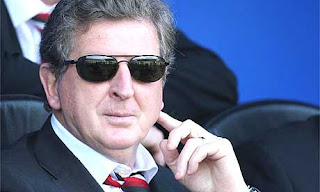
"The future's so bright, I gotta wear shades"
Even though Hodgson’s role has been pivotal to Fulham’s recent achievements, he is not the most important man at the club. That description applies to the chairman, Mohamed Al Fayed , who has bankrolled the team’s amazing rise.
On buying Fulham in 1997, the then owner of Harrods , London’s world-famous department store, brashly stated that he wanted them to become the “Manchester United of the South." This has not quite come to pass, but the club’s transformation has still been remarkable. Al Fayed also pledged to take the club from the old Division Two to the Premier League in five years and they actually achieved that in one year less, winning two divisional championships e n route t o the top tier .
Obviously much of the credit for the club’s progress must go to the players and various managers, but it is difficult to believe that Fulham would have reached these heights without Al Fayed’s continual funding over more than a decade.
Although not possessing the riches of Roman Abramovich or Sheikh Mansour , he is estimated to have a £650 million fortune, which places him 94th on the Sunday Times Rich List and has enabled him to finance the football club.
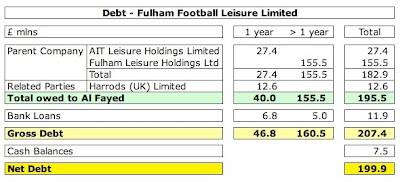
It is clear that Fulham fans owe Al Fayed a great deal—quite literally, in terms of the club’s debts. As of the 30th of June 2009, Fulham’s gross debt stood at an enormous £207 million, which is the fifth highest in the Premier League, only behind the so-called Big Four. However, only £12 million of this debt comes from commercial bank loans with the vast majority (£196 million) owed to the owner via a number of group companies. Al Fayed’s generosity is highlighted by the “soft” nature of the debt with the £183 million loans from the parent company being interest-free, which really helps the club’s financials.
Furthermore, much of this debt (£83 million) is unsecured, which means that Al Fayed has no guarantee of repayment. Even though £100 million is secured on the club’s assets, the accounts contain assurances from Al Fayed’s parent company that “no repayment demand will be made which would cause the group to become technically insolvent.”
Al Fayed’s flexibility had already been demonstrated in 2007, when he restructured the loan agreements with the club to ease the repayment schedule. Previously, the loans had been repayable on demand or within the following 12 months, but this was rescheduled to become repayable in annual installments of £10 million with the first payment only due in July 2012.
In yet another gesture of support, Al Fayed forgave £9.5 million of outstanding loans as part of this agreement. No wonder that Deloitte’s Sports Business Group describes such funding as “akin to equity rather than debt where it is a contribution from a benefactor that is not necessarily requiring repayment in the future.”

"Fulham's No. 1 fan"
The £12.6 million loan from Harrods (UK) Limited did attract 7.11% interest, but this was repaid in August 2009 (after the accounts were published), as was £4.8 million of bank loans. More worryingly, £25 million of additional funding was obtained from third parties after the year-end, partly secured on future broadcasting rights and a second charge over the assets of Fulham Stadium Limited, though nearly £10 million of this has already been repaid.
Fulham’s ownership might appear complex with their financing coming from an ever-changing list of companies, but it’s really quite simple with the money effectively owed to Al Fayed. In the past, the owner used to support the club through loans from Harrods, but these have all been repaid and replaced by loans from Fulham’s parent company, AIT Leisure Limited, which is incorporated in the British Virgin Islands, and its previous parent company, Fulham Leisure Holdings Ltd. The ultimate parent undertaking is Mafco Holdings Limited, a company registered in Bermuda, which is controlled by the Al Fayed family.
People may have doubted Al Fayed’s motives when he paid £30 million to purchase Fulham, but he has since invested well over £200 million into the club. First, in order to get the club into the Premier League and second, to keep it there. The importance of this funding is evident when examining Fulham’s financials.
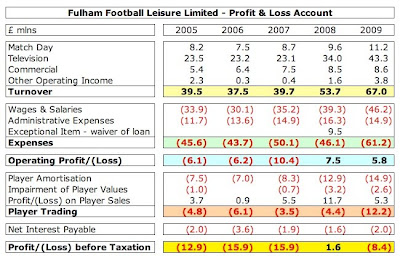
The stark reality is that Fulham simply do not make profits. In the last five years, they have only managed to once report a profit—and that was due to some nifty accounting in 2008 when they booked the waiver of a £9.5 million loan as a cost credit. Without including that exceptional item, there would have been another loss of £8 million. Otherwise, it’s a sea of red ink. Not only do Fulham report losses, but they’re also relatively high compared to the turnover, e.g. they recorded losses of £16 million in both 2006 and 2007 on a turnover of less than £40 million.
Even though revenue has significantly increased over the past five years from £39.5 million to £67 million—largely due to the growth in broadcasting income—the club has not really improved its underlying financial position.
The higher Sky television deals have only managed to contribute to smaller losses. The problem is that much of the revenue growth has been used to increase player wages and buy new players in order to give the club the best chance of surviving in the Premier League, which, in fairness, is completely understandable.
Fulham have managed to achieve an operating profit in the last two seasons, but this has been more than eaten up by player trading. The situation would have been even worse without Al Fayed subsidising the club by not charging interest on the loans. If the club had to pay a commercial rate, this would increase the interest payable (and losses) by around £10 million a year.

Given the size of Fulham’s turnover, they are bound to struggle financially. If we look at the revenue of the clubs who finished in the top ten in the Premier League in '08-'09, we can see that Fulham are rock bottom with just £67 million, which is at least £10 million lower than every other team.
In particular, the match day revenue of £11 million is painfully small, while the low commercial revenue of £12 million is actually inflated by including £3.8 million of unexplained “other operating income." The real commercial revenue is tiny at just £8.6 million. Obviously, money is not the only factor in a club’s success, which can also be driven by old-fashioned positives like good coaching, tactics, developing players and team spirit, but it sure makes life easier.
As with many other clubs of this level in the Premier League, it’s all about the TV money with Fulham earning nearly two-thirds of their income from this revenue stream—£43 million out of the total £67 million. Despite this, Al Fayed believes that clubs like Fulham should receive even more from the central pool. Not only does he think that the total deal should be higher, describing those responsible at the Premier League as “donkeys who don’t understand business", but he thinks that the distribution method favours the big clubs.
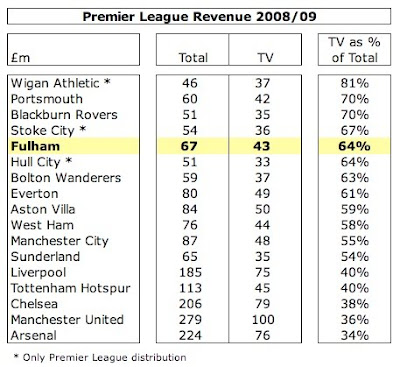
Although 50% of the domestic rights and 100% of the overseas rights are distributed equally among the Premier League clubs, much of the money is not allocated in this manner. Merit payments account for 25% of the domestic rights with each place being worth £800,000, so Fulham’s slip from seventh in '08-'09 to 12th last season will cost them £4 million. As Al Fayed put it, with a typical flourish, “we are hopelessly dependent on our end-of-season league placing to determine our share of the cash—it makes a difference of feast or famine every season.”
Less obviously, they are also reliant on how many times Sky design is to broadcast their matches live, which accounts for the remaining 25% of the domestic rights. The more a team is shown live, the higher the share of the facility fee.
Each team must be broadcast a minimum of ten times a season with a maximum of 24, but this tends to benefit the big clubs. For example, in each of the last two seasons, Fulham have been shown the minimum ten times, while we have had the pleasure of watching Manchester United the maximum 24 times. The difference in revenue? Nearly £7 million.
According to the latest accounts, the club’s “commercial activities continued to grow”, but there is precious little evidence of this driving significant growth with revenue still well short of £10 million—considerably lower than other clubs. As a comparison, Arsenal earn £48 million commercial revenue and they are usually considered as laggards in this area.
Nevertheless, there are small signs of improvement here with a new sponsor and shirt supplier being announced for next season. FxPro, the global broker, has signed a three-year deal for over £4 million a year, replacing LG Electronics, who only paid £3m a year. Similarly, Kappa has replaced Nike as kit supplier for the next three years. Bizarrely, Fulham also have a joint marketing arrangement with the Boston Red Sox baseball team, but I can’t see that bringing in much income.
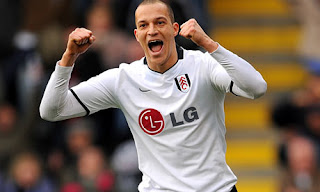
"... that's Zamora"
Nor can Fulham look to gate receipts for big bucks.
Even though it’s been increasing, match day revenue is particularly low at £11 million. In comparison, clubs with substantial grounds like Manchester United and Arsenal generate over £100 million, but even other mid-size clubs earn over twice Fulham’s revenue.
Of course, Craven Cottage is one of the smallest grounds in the Premier League with a capacity of only 25,478, but even this is not filled to capacity every week, so discounts are sometimes offered. Although attendances have been steadily rising from the 19,800 average in season '04-'05, there was a slight dip last year to 23,900, which means a 94% utilisation—the lowest of all Premier League clubs in London.
Fulham actually have planning permission to expand their ground to 30,000, but it is far from certain that they would be able to fill it. As other clubs have noted to their cost, the “Field of Dreams ” approach (“build it and they will come”) does not always work. In fact, despite its picturesque setting, Craven Cottage has given the club a few headaches in the recent past, most notably when they were promoted to the Premier League and they were forced to ground share at QPR’s Loftus Road while their own stadium was converted to an all-seater.
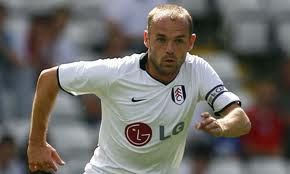
"Murphy's law"
There would be other difficulties in expanding the ground, most notably its proximity to the River Thames , but the great views offered by this attractive location make it a highly desirable piece of prime residential real estate. Indeed, many suspected that Al Fayed’s motive in buying the club was to develop luxury riverside apartments.
This view was given greater credibility in 2002 when the club agreed to sell the ground to a housing developer, Fulham River Projects, for £50 million, though the deal ultimately fell through. It was later explained that the club desperately needed the £15 million deposit at the time, after Harrods suffered a poor year’s trading, meaning that Al Fayed could not make his usual cash injection.
Although it now looks like the club want to secure their long-term future at Craven Cottage, the ground’s freehold is still one of their principal assets. Valued in the books at £22 million, it is clearly worth more than that.Given the £50 million price agreed eight years ago, a conservative estimate would be £60-70 million.
The other important assets are the players (a.k.a. intangible assets), which are valued at £31 million, though would almost certainly realise more on the open market. The club also has a substantial deferred tax loss of £44 million, which is no use to Fulham, so is not recognised in the accounts, but could be useful to a future purchaser.
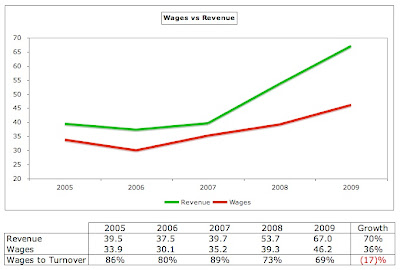
The horrible truth is that the only way that any financial value could be realised is from the sale of these assets and no fan would be in a hurry to sell off the players or the ground. Even so, the club still has net liabilities of £166 million, up from £115 million in 2004, a sign that the balance sheet is steadily deteriorating over time.
One of the main reasons is the growth in wages, which have risen 36% in five years from £34 million to £46 million. To be fair, this salary level is by no means the worst in the Premier League. In fact, it’s the 13th highest, which is consistent with their league position of 12th.
Furthermore, the important wages to turnover ratio has been improving, falling from 86% in 2005 to 69% in 2009, which is just about within the 70% maximum recommended by UEFA and Deloitte. However, it is still too large for the club to comfortably sustain, so it is little wonder that Al Fayed has been a staunch advocate of a wage cap, “They must put a cap on fees and salaries. It’s madness what’s happening.”
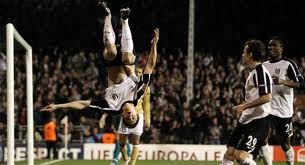
"Turning the world upside down"
The other expense that has been growing over the years is player amortisation, which is the annual cost of writing-down a player’s purchase price. For example, Damien Duff was signed for £4 million on a three-year contract, but his transfer is only reflected in the profit and loss account via amortisation, which is booked evenly over the life of his contract, i.e. £1.3 million a year (£4 million divided by three years). Thus, the total cost of player purchases is not immediately reflected in the expenses, but increased transfer spend will ultimately result in higher amortisation.
In Fulham’s case, it has grown from £7 million to £15 million, but this is still way behind their big-spending neighbours Chelsea with £49 million. Interestingly, Fulham are one of the few clubs that explicitly include impairment losses for reducing the value of some of their players, which has cost the club almost £7 million over the last three seasons.
As stated above, the implication of the growing amortisation is that Fulham are a buying club and this is confirmed by their net transfer spend of almost £70 million since Al Fayed’s takeover, though the activity has been sporadic. Although the expenditure might seem low in the early years, it was in fact very high for the lower divisions, but it only really took off in 2001 on the club’s promotion to the Premier League, when they splashed out £32 million. Lawrie Sanchez was also given strong backing in 2007, when he bought Diomansy Kamara and what seemed like half of the Northern Ireland team, as was Roy Hodgson to a lesser extent in 2008.
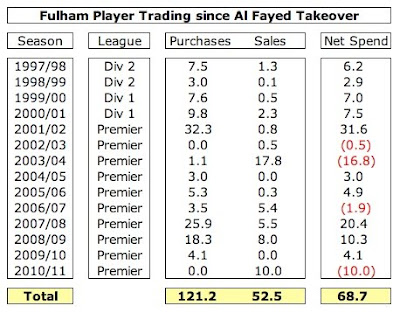
The sale of Louis Saha to Manchester United for £13 million in 2003 lead to that year’s net surplus, but not many appreciate that these funds were needed to help repay the £15 million deposit (plus interest) that Fulham had received the year before as part of the proposed deal to sell their ground for housing development. Incidentally, that central London location surely helps Fulham in the transfer market when recruiting players from overseas. Unfashionable clubs in the North of England often have to pay a premium to tempt the same players away from the capital.
Despite the relatively high expenditure for a club of Fulham’s size, Al Fayed has said that he will never pay more than £15 million for a player, having had his fingers badly burned after wasting £11 million on misfiring striker Steve Marlet . Having said that, the accounts state that the club “will continue to invest in the playing squad to maintain and improve on the results achieved during the playing season.”
The fact is that the clubs needs to spend money on players in order to under-pin their basic strategy of remaining in the Premier League. The main commercial risk in the accounts is “that associated with potential failure to retain membership of the Premier League.”
If that were not enough, the accounts then proceed to really spell it out—“In the event of relegation from the FAPL, the Group’s revenues would fall in the next two years to a level which would not finance ongoing contractual commitments and the Group would therefore have to take action to significantly reduce operating costs. Such action could prevent the maintenance of a playing squad capable of gaining promotion back to the FAPL.”

"Coleman's mind games were not enough"
There you have it— a perfect summary of the issue facing clubs such as Fulham.
In short, they cannot afford to be relegated. This is why they will apparently over-spend on transfers and wages in order to avoid that risk becoming a reality. It is also why owners are ruthless with their managers, if the threat of relegation rears its ugly head. When this has looked like a distinct possibility at Fulham, Al Fayed has not hesitated to act, dismissing Jean Tigana , Chris Coleman and Sanchez, even though the first two had achieved their fair share of success.
Such clubs have become addicted to the Premier League’s drug of choice, namely TV money, and in particular the tempting prospect of increasing money with every three-year contract. As we have seen, Fulham’s chances of making more match day income are slim, and even though their commercial prospects have been enhanced by last season’s exposure, this is really a drop in the ocean. No, they need the television riches, especially now that they will further increase next season on the back of far higher overseas rights, which will mean an additional £10 million per annum for each club.

How much of that extra revenue will find its way to the bottom line is unclear. If past experience is any guide, much of it will end up in the players’ bank accounts via higher wages.
This is why Al Fayed has to keep pumping money in, which we can see by looking at the cash flow statement. Before financing, the cash flow is negative every single year and has to be compensated by the owner. The club makes no bones about this in the accounts, “The Group’s main sources of finance, for operating losses, working capital and capital expenditure (including player transfers) in excess of funds generated internally, are interest-free loans from its parent company.”
Thankfully, the accounts also state that the club has received assurances from Al Fayed that continued funding would be made available, if required—even if the team is relegated.
This support remains crucial to Fulham’s future prospects. Indeed, in both the 2006 and 2007 accounts the auditors cast doubt on “the group’s ability to continue as a going concern”, specifically noting the “significant losses” and “significant deficit of shareholder funds”, while stressing the importance of the parent company’s financial assistance. Matters have since approved in the auditors’ eyes, presumably due to the higher revenue and the debt restructuring, but these clauses do highlight Fulham’s dependence on the chairman.
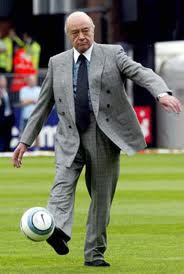
"Can he kick it?"
Fortunately, Al Fayed has proved to be one of the Premier League’s most indulgent owners, seemingly happy to sink money into the club year after year, but there has to be a nagging concern over what would happen if he were to walk away. He appears perfectly happy with the club at the moment, but he could get bored, run out of money, emigrate to Switzerland (which he has already done once after a dispute with the Inland Revenue) or even die.
Although apparently as energetic as ever, at 77 years old, Al Fayed’s not getting any younger. Fulham is in many respects the typical benefactor club and could be plunged into financial chaos without Al Fayed’s backing (for whatever reason), unless they could find a similarly big-hearted owner to replace him.
The other issue with benefactor clubs is that they could be prevented from playing in Europe under UEFA’s new Financial Fair Play rules, which will ban clubs that make consistent losses. At present, this is not an issue, as Fulham’s losses are within the “acceptable deviation” allowed during the first years of implementation, but UEFA aim to eventually bring this down to a genuine break-even. At least Fulham have the support of Premier League chief executive, Richard Scudamore , who has said he would “protect to the nth degree the ability of Mohamed Al Fayed to do what he has done at Fulham.”
Over the years, Al Fayed has been a somewhat controversial figure. He waged a lengthy campaign attempting to prove that Princess Diana and his son Dodi , who died in a Paris car crash in 1997, were murdered as part of a conspiracy. Despite living in Britain for decades, his applications for a British passport have repeatedly been turned down, possibly because of his long-running feud with The Observer chairman, Tiny Rowland , who battled him for control of Harrods.

"So near, yet so far"
Ironically, Al Fayed recently cashed in on the Knightsbridge store, when he sold it to Qatar Holdings for a reported £1.5 billion. After repaying bank loans of £625 million, he received net proceeds of around £900 million. Despite this dramatic change in his lifestyle, he was anxious to re-assure the club’s supporters, “It all remains the same at Fulham. Fulham is not being sold.”
This was re-iterated by one of his spokesmen, “Just because you sell your house doesn’t mean you will sell your car.” Nevertheless, there has to be some concern that without his cash cow, Al Fayed will at some stage stop putting money into the club.
However, Al Fayed has frequently expressed his commitment to the club, albeit sometimes with more than a touch of hyperbole, “I own the best club in the world with the best team and the best fans. If anyone thinks I’m not committed to the game, or to Fulham, they’re wrong.” As he more prosaically explained last season, “I have nurtured my club lovingly for nearly 12 years, and I don’t plan to give it up.”
And that’s the point—nobody could accuse Al Fayed of being a “here today, gone tomorrow” investor. He has been a committed owner, demonstrating real empathy with the fans. Moreover, his sons, Omar and Karim, are both active members of the Fulham board, and his attachment to the club must have been boosted by last season’s displays.
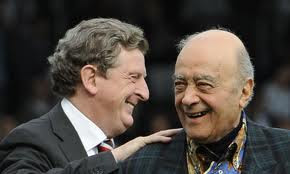
"The happy couple"
So what next for Fulham?
In the short-term, Mark Hughes has inherited an ageing squad with many key players nearing the end of their contracts, so may face a rebuilding challenge. Expectations among fans are very high after two successful seasons, but the club should probably be realistic in the transfer market and aim for mid-table security, rather than shooting for the stars.
What we can say with some certainty is that Fulham have been transformed under Mohamed Al Fayed’s vision and leadership, not only rising all the way to the Premier League, but also managing to flourish there against all the (financial) odds. Despite achieving this with the help of Al Fayed’s significant investment, they have somehow managed to do it without making enemies along the way. Maybe money can buy you love after all.
![]() According to the rumor mill, Guillermo Ochoa, the goalie for Club America, may be signed by Fulham or Arsenal.
According to the rumor mill, Guillermo Ochoa, the goalie for Club America, may be signed by Fulham or Arsenal.



















